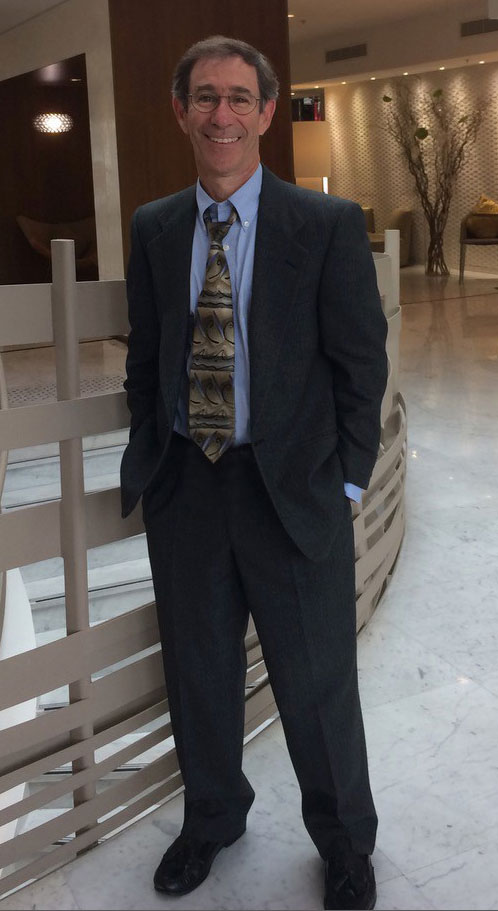DOE Honors Former DIII-D Operations Director
Secretary’s Appreciation Award recognizes 30 years of leadership at DIII-D

San Diego, December 17 – The U.S. Department of Energy (DOE) has recognized Dr. Arnie Kellman, the retiring Division Director of Operations at the DIII-D National Fusion Facility, for his significant contributions to fusion energy research. Over his 37-year career in fusion at General Atomics (GA), which operates DIII-D as a national user facility for DOE’s Office of Science, Kellman was instrumental in keeping the facility on the cutting edge of scientific research through keen oversight of operations and a series of important upgrades to the DIII-D tokamak and its supporting systems.
The DOE Secretary’s Appreciation Award reads in part, “With your exceptional dedication and significant contributions as the Division Director of DIII-D Operations, you delivered multiple decades of reliable tokamak operation while successfully completing many transformative capability enhancements. Your achievements have positioned DIII-D as a world-leading research program and advanced the vision of making fusion energy a reality.”
Dr. James Van Dam, Associate Director for DOE’s Office of Science, for Fusion Energy Sciences, presented the award to Kellman during a remote ceremony on November 19.
“The heart of any long-running research program like DIII-D is the people who every day bring passion and commitment needed to sustain progress while working toward a common goal,” said Dr. Tony Taylor, Vice President for magnetic fusion energy at General Atomics (GA), who has worked with Kellman since shortly after he arrived at GA. “Arnie embodies that idea. He is part of the bedrock of DIII-D.”
DIII-D is the largest magnetic fusion research facility in the country. It hosts researchers from more than 100 institutions across the globe, including 40 universities. The heart of the facility is a tokamak that uses powerful electromagnets to produce a doughnut-shaped, or toroidal, magnetic containment for confining a fusion plasma. In DIII-D, plasma temperatures that are 10 times hotter than the Sun are routinely achieved. At such extremely high temperatures, hydrogen isotopes can fuse together and release energy.
Kellman discovered his passion for fusion energy at the University of Wisconsin–Madison, where he received his doctorate in physics. He came to GA in 1983 and began working in the research group, but he soon found himself drawn to the hands-on work of operations. Dr. Kellman has led the Tokamak and DIII-D Operations Groups since 1990. These groups have the responsibility for keeping the extraordinarily complex facility running smoothly while planning and designing upgrades to keep it on the cutting edge of fusion science. Both are significant challenges given the extreme conditions that the tokamak must maintain to produce fusion.
“We have components that are almost the coldest things in the universe next to things that are the hottest in the universe, and they’re all one meter apart,” Kellman said. “That is certainly a challenge, but we solved that problem, and it works.”
Because fusion science continues to advance, new systems and capabilities are necessary to allow DIII-D researchers to explore new areas of fusion and refine earlier discoveries. That need has led to a number of major upgrade projects that Kellman spearheaded. One such project was DIII-D’s neutral beam injectors. These systems heat and control the reaction by shooting beams of particles into the plasma. The original neutral beams were fixed in place, but after a request from the research group, Kellman’s team spent months developing a way to reposition the sensitive, multi-ton instruments between experiments. The first upgrade allowed for vertical repositioning; the most recent upgrade in 2019 gave DIII-D a neutral beam that can be steered in any direction.
Another project was DIII-D’s internal magnetic coils, which Kellman views as a memorable success. The massive magnets on DIII-D and other tokamaks are located outside the vacuum vessel, but they create magnetic fields inside where the plasma is heated. Researchers believed that placing magnetic coils inside the tokamak would allow them to more rapidly and efficiently shape the outside edge of the plasma. The innovative project was successful enough that internal coils are now planned for the ITER project being built in France and will likely be incorporated in all future tokamaks.
“Fusion is one of those rare things that a scientist can work on that can really have impact on the human race forever,” Kellman said. “I remember in grad school thinking that when I retired, I wanted to be able to tell my kids and grandkids, ‘This is what I did with my career,’ and be proud of that. The amount of progress that we have made is just astronomical. I’m looking forward to seeing what the next generation does with my generation’s work.”
About General Atomics: Since the dawn of the atomic age, General Atomics innovations have advanced the state of the art across the full spectrum of science and technology – from nuclear energy and defense to medicine and high-performance computing. Behind a talented global team of scientists, engineers, and professionals, GA’s unique experience and capabilities continue to deliver safe, sustainable, economical, and innovative solutions to meet growing global demands.
For more information contact:
Zabrina Johal
858-455-4004
Zabrina.Johal@ga.com